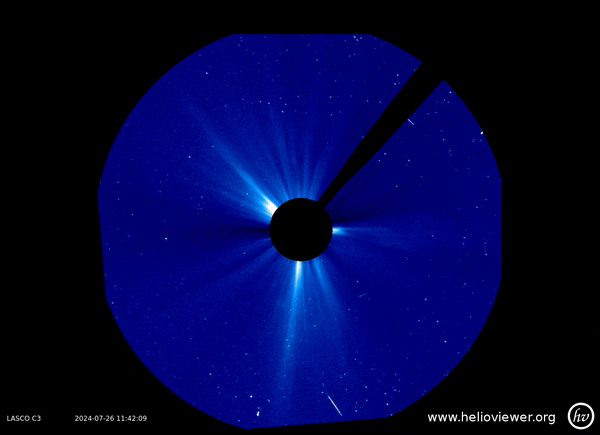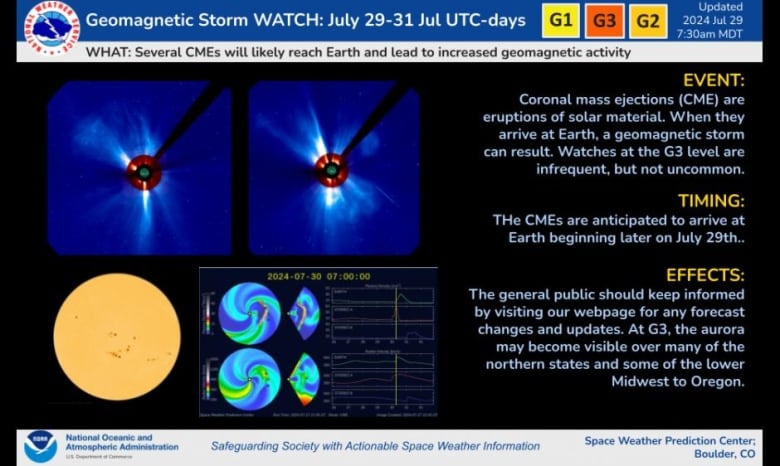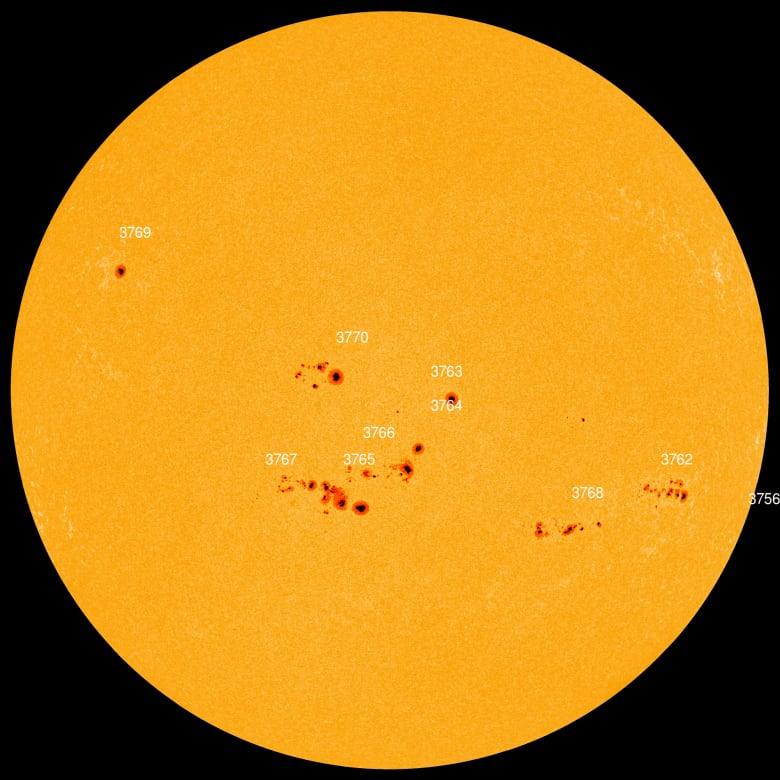If things go well, Canadians may once again see the night sky explode in many colors.
The Sun has been very active for the past few days, sending out large amounts of solar radiation and coronal mass ejections (CMEs) that can produce the northern lights.
Our star goes through an 11-year cycle of rising and falling activity on it, called solar maxima and solar minima. The sun is currently in solar highs.
When this happens, the sun’s surface becomes filled with sunspots, which are cold regions with complex gravity. When this magnetic field is trapped it can explode, causing a solar flare.
Often, these flares are followed by CMEs, massive explosions of charged particles – think billions of tons of material.
This is what happened over the weekend.
“Basically, the sun woke up from a little slumber,” said Chris Ratzlaff, an experienced aurora chaser from Airdrie, Alta.
“It’s been quiet, but now it seems like it suddenly woke up.”

Over the weekend, the sun produced several cluster-centered M-flares (X-flares are the strongest) and two CMEs, both headed our way.
But the day did not end there. The next day, several more CMEs were released, according to the National Oceanic and Atmospheric Administration’s Space Weather Prediction Center (SPWC), which issued a geomagnetic storm watch, indicating that the results of this activity it will all make sense soon.
A storm could hit Earth tonight, producing the bright northern lights, or aurora borealis. However the chances increase on Tuesday and Wednesday.
Natural Resources Canada is also predicting possible storm conditions in low-lying areas, south of the polar region.

‘Expectations of anger’
The last major solar storm to hit Earth was on the night of May 10-11. That night, two CMEs from X-flares hit Earth, creating a spectacular display of northern and southern lights seen around the world.
The current increasing solar activity – which is ongoing – is similar, but also different.
“Up until May 10, we had several X-flares,” Ratzlaff said. “So the difference is very noticeable, in that here we’re dealing with multiple flares, as opposed to a few large flares.”
As of the May 10 forecast, SWPC is predicting a severe G3 geomagnetic storm (the scale ranges from G1 to G5). The hope is that it will produce the same result, although predicting the northern lights is very difficult.
Ratzlaff said he often tells people to “temper their expectations,” noting that there is only a 30% chance that a storm will happen as predicted.
“There is a 70% chance that nothing will happen,” he said.
WATCH | Northern Lights May 10 Kawartha Lakes, Ont.:
If you’d like to increase your chances of seeing the northern lights, the first thing is to keep up with the forecast. You can visit websites like SpaceWeather.com and SpaceWeatherLive.com. There are also several free apps if you’re looking for “aurora alerts.”
For them, it is better to get to the “dark sky” area, away from the city lights. As Ratzlaff said, “If you can see the stars, you can see the aurora.”
And, as their name suggests, look north, although sometimes – like in May – very strong storms can make them appear in the south too.
You can also try to photograph them with a DSLR camera, which is more sensitive than our eyes. The key is to set a high ISO like 800 or 1600, and leave the shutter open for at least 10 to 25 seconds. You can play around with the settings, as bright aurora won’t need ISO high and you won’t have to leave the shutter open for long. And it’s important to use a tripod.
But the final display was so bright that even cell phone cameras could capture color, so that’s also an option.
Ratzlaff says he’s glad there’s another chance for another good show, but he’s certain.
He said: “Hope for the best, expect the worst is my motto. “I try not to be disappointed when things don’t go the way we expected, because I know that there will always be another chance.”
#display #northern #lights #week #CBC #News

